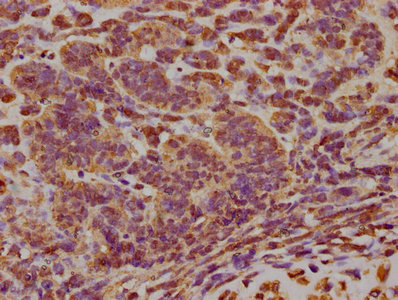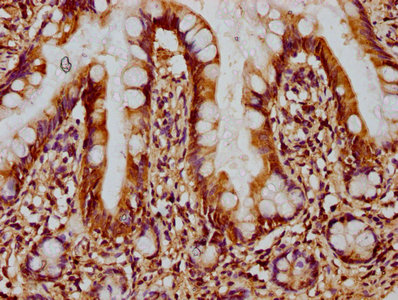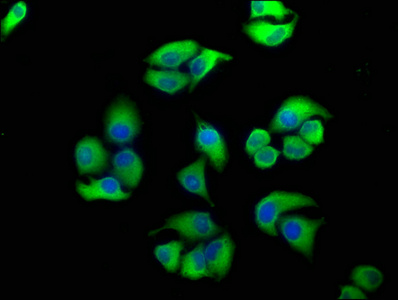
IHC image of CSB-PA007512LA01HU diluted at 1:300 and staining in paraffin-embedded human ovarian cancer performed on a Leica BondTM system. After dewaxing and hydration, antigen retrieval was mediated by high pressure in a citrate buffer (pH 6.0). Section was blocked with 10% normal goat serum 30min at RT. Then primary antibody (1% BSA) was incubated at 4°C overnight. The primary is detected by a biotinylated secondary antibody and visualized using an HRP conjugated SP system.
EIF2AK3 Antibody
CSB-PA007512LA01HU
ApplicationsImmunoFluorescence, ELISA, ImmunoHistoChemistry
Product group Antibodies
ReactivityHuman
TargetEIF2AK3
Overview
- SupplierCusabio
- Product NameEIF2AK3 Antibody
- Delivery Days Customer20
- ApplicationsImmunoFluorescence, ELISA, ImmunoHistoChemistry
- CertificationResearch Use Only
- ClonalityPolyclonal
- ConjugateUnconjugated
- Gene ID9451
- Target nameEIF2AK3
- Target descriptioneukaryotic translation initiation factor 2 alpha kinase 3
- Target synonymseukaryotic translation initiation factor 2-alpha kinase 3; pancreatic EIF2-alpha kinase; PEK; PERK; PRKR-like endoplasmic reticulum kinase; truncated eukaryotic translation initiation factor 2 alpha kinase 3; WRS
- HostRabbit
- IsotypeIgG
- Protein IDQ9NZJ5
- Protein NameEukaryotic translation initiation factor 2-alpha kinase 3
- Scientific DescriptionMetabolic-stress sensing protein kinase that phosphorylates the alpha subunit of eukaryotic translation initiation factor 2 (eIF-2-alpha/EIF2S1) on Ser-52 during the unfolded protein response (UPR) and in response to low amino acid availability. Converts phosphorylated eIF-2-alpha/EIF2S1 either in a global protein synthesis inhibitor, leading to a reduced overall utilization of amino acids, or to a translation initiation activator of specific mRNAs, such as the transcriptional activator ATF4, and hence allowing ATF4-mediated reprogramming of amino acid biosynthetic gene expression to alleviate nutrient depletion. Serves as a critical effector of unfolded protein response (UPR)-induced G1 growth arrest due to the loss of cyclin-D1 (CCND1). Involved in control of mitochondrial morphology and function.
- ReactivityHuman
- Storage Instruction-20°C or -80°C
- UNSPSC12352203


